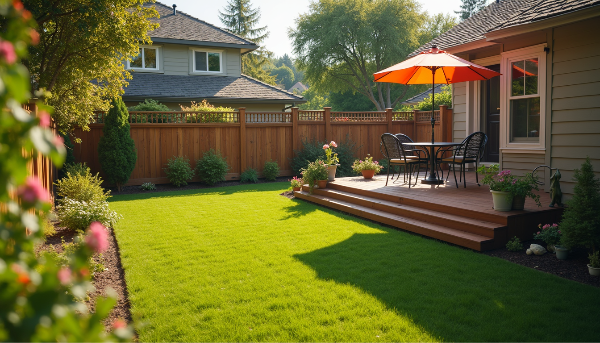Interesting and Creative Field. Painting?
- Jed Roper
- Jul 19, 2023
- 4 min read
Updated: Aug 14

Making Art: Residential House Painting St George UT
Residential painting isn't just about walls—it’s about creative house painting in St. George, UT that reflects your personality, mood, and design vision.
Historical Origins: The practice of painting residential buildings dates back thousands of years. Archaeological evidence shows humans using natural pigments—early art supplies—to paint their dwellings, blending art making with home protection since ancient times.
The Psychology of Colors: Colors evoke emotions, an essential tool in residential painting. Blue brings calmness to your own space, while yellow sparks happiness—creative ideas painters use to craft a mood when inspiration strikes.
Color Trends: Paint colors follow trends like fashion, offering design possibilities. Influenced by interior styles and Pantone’s Color of the Year, a few ideas like earthy tones or bold hues guide homeowners feeling inspired to start painting.
VOC-Free Paints: Traditional paints release VOCs, but eco-friendly VOC-free acrylic paint options—perfect for a creative practice—promote a healthier creative life in your dedicated space, like a dining room or living area.
Accent Walls: An accent wall in the same color or a bold contrast adds visual interest. Using painter’s tape, it’s a creative way to enhance a dining table area or coffee table nook with a polished finish.
Historical Color Restoration: In older homes, painters restore original colors—sometimes researching historical pigments first—reviving history in your own space, making art that honors the past.
Paint Effects: Techniques like sponging or stippling, applied with art supplies, add texture to walls. These creative ideas bring depth to a dining room, turning it into a canvas for happy creating.
Mural Painting: Custom murals transform your dedicated space into a storytelling masterpiece. Whether nature-inspired or abstract on watercolor paper first, they’re a creative practice for free time art making.
Paint Technology: Advances like washability and mold protection in acrylic paint make maintenance easy. This essential tool ensures a polished finish in busy households, inspiring more ideas for your creative life.
DIY Enthusiasts: DIY painting with colored pencils for planning or painter’s tape for precision is rewarding. With online tutorials, start painting your dining room or coffee table corner—perfect for those feeling inspired in their free time.
Color Names: Whimsical names like "Sunflower Symphony" spark creative ways to choose paint. These evoke imagery, making the process engaging—leave a comment below with your favorite for more ideas!
Residential painting blends art and science, enhancing your own space with creative practice. From historical pigments to VOC-free paints, it’s about making art that reflects your style. With psychology, trends, and techniques like murals, it’s a creative life enriched by design possibilities—happy creating!
Frequently Asked Questions: Residential House Painting
Q: Why is the history of residential painting important?
A: Thousands of years ago painting with natural materials showed its purpose in aesthetics and protection. When you start painting your own space this history adds depth to your practice.
Q: How do different colors affect the mood of a room?
A: Colors are a tool—blue for a dining room, yellow for a coffee table area. Creative ideas from psychology when inspiration strikes for your dedicated space.
Q: What are the current color trends in residential painting?
A: Trends are a few ideas like earthy tones or bold accents from Pantone. Feeling inspired? Use graph paper to design your dining room.
Q: Why choose VOC-free paints for my home?
A: VOC-free acrylic paint is a healthier creative life—no fumes in your own space. Perfect for art making in a dedicated space like a living area.
Q: What is an accent wall and how can it enhance my home?
A: An accent wall with painter’s tape is a polished finish in many ways. Paint it the same color or bold for a coffee table nook—more ideas for visual interest!
Q: Can historical homes benefit from color restoration?
A: Yes—restoring original colors with art supplies brings back charm. It’s making art in your own space, combining history with your practice.
Q: What are some unique painting techniques used in residential painting?
A: Sponging or stippling with acrylic paint is texture—great for a dining room. These ideas are a polished finish for happy creating.
Q: How can mural painting transform my living space?
A: Murals on watercolor paper or walls bring design to life. In free time start painting a nature inspired piece in your dedicated space for a unique touch.
Q: What advancements in paint technology should I know about?
A: Washable, mold-resistant paint is an essential tool for durability. They support your creative life with a polished finish in busy areas like the dining table zone.
Q: Can I paint my home myself, or should I hire a professional?
A: DIY with colored pencils for planning or painter’s tape is fun—perfect for free time. Pros ensure precision in your own space especially for complex ways.
Q: How do creative color names affect my decision?
A: Names like "Tranquil Twilight" spark more ideas, making selection engaging. Leave a comment with your favorite below—happy creating with these creative ideas!




Comments